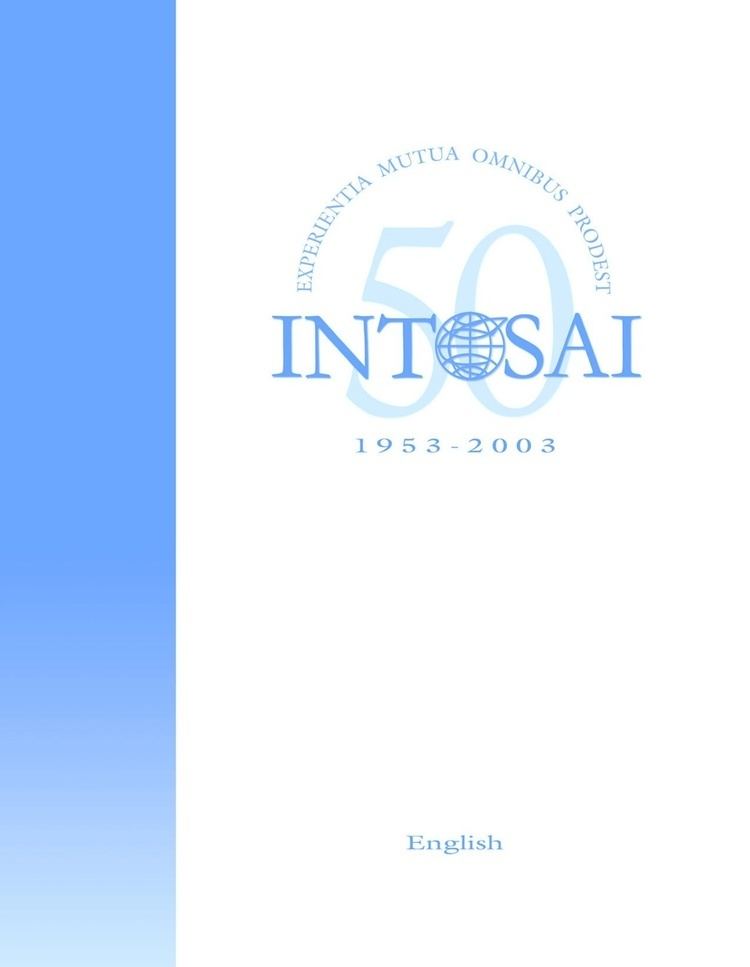Abbreviation INTOSAI Type IGO | Formation 1953 | |
 | ||
Motto Experientia Mutua Omnibus Prodest, "Mutual experience benefits all" | ||
The International Organization of Supreme Audit Institutions (INTOSAI) is a worldwide affiliation of governmental entities. Its members are the Chief Financial Controller/Comptroller General/Auditor General Offices of nations.
Contents
- The ISSAIs International Standards of Supreme Audit Institutions
- Two main types of audit
- Regularity audit
- Performance audit
- Adoption by intergovernmental organizations
- INTOSAI and Internal Audit
- Regional working groups
- Memberships
- Supranational Organisations
- Associate Members
- References
INTOSAI was founded in 1953 in Havana, Cuba. Thirty-four audit organizations formed the group originally and as of 2010 the current membership includes 193 institutions (188 national institutions, the European Court of Auditors and 4 associated members).
The members of INTOSAI are the primary external auditors of the United Nations. The UN's General Assembly appoints the UN Board of Auditors (3 members appointed for 6 years) among the INTOSAI member representatives.
INTOSAI holds a triennial conference entitled the International Congress of Supreme Audit Institutions (INCOSAI). It publishes the quarterly International Journal of Government Auditing. Examples of its major publications are:
The ISSAIs, International Standards of Supreme Audit Institutions
The International Standards of Supreme Audit Institutions (ISSAI) are a benchmark for auditing public entities (External Audit Standards for public entities).
The "INTOSAI Auditing Standards" had been approved by the INCOSAI in 1998 and updated in 2001. In its strategic plan 2005-2010, the INTOSAI decided to "provide an up-to-date framework of professional standards", so the INTOSAI Professional Standards Committee decided to merge the existing and new INTOSAI standards and guidelines into a framework.
The framework comprises all documents endorsed by INCOSAI with the purpose of guiding the professional standards used by SAIs
The ISSAIs can be found at INTOSAI.ORG and issai.org. The list of ISSAIs is in the table below:
Two main types of audit
The INTOSAI Auditing Standards distinguish basically two types of audit that a government auditor may perform:
Regularity audit
A Regularity audit or Statutory audit is a financial audit of the financial reporting or budget reporting of the audited entity.
In a regularity audit, the audit report contains the auditor's opinion.
Performance audit
Performance audit refers to an examination of a program, function, operation or the management systems and procedures of a governmental or non-profit entity to assess whether the entity is achieving economy, efficiency and effectiveness in the employment of available resources.
In a performance audit, the report should contain a statement of assurance on those items tested for compliance, as the auditor's conclusion (as opposed to opinion).
The INTOSAI's (and GAO's or ECA's) Performance audit corresponds to the Review Engagements or "Assurance Engagements other than Audits" of the IFAC.
Adoption by intergovernmental organizations
In addition to the INTOSAI members (the Supreme Audit Institutions), the following intergovernmental organizations have adopted INTOSAI AS:
INTOSAI and Internal Audit
The Institute of Internal Auditors (IIA) is among the 4 associated members of the INTOSAI.
The INTOSAI is a strong advocate for the establishment of Independent Internal audit in public entities.
The guidance 'INTOSAI GOV 9100' states: -(page 46) "The Supreme Audit Institution also has a vested interest in ensuring that strong internal audit units exist where needed. Those audit units constitute an important element of internal control by providing a continuous means for improving an organisation's operations. In some countries, however, the internal audit units may lack independence, be weak, or be non-existent. In those cases, the SAI should, whenever possible, offer assistance and guidance to establish and develop those capacities and to ensure the independence of the internal auditor's activities." - "The creation of an internal audit unit as part of the internal control system is a strong signal by management that internal control is important.
(...) For an internal audit function to be effective, it is essential that the internal audit staff be independent from management, work in an unbiased, correct and honest way and that they report directly to the highest level of authority within the organisation.
(...) "For professional guidance, internal auditors should use the Professional Practices Framework (PPF) of the Institute of Internal Auditors (IIA) (...) Additionally, internal auditors should follow the INTOSAI Code of Ethics".
Regional working groups
Memberships
The following countries are members of the INTOSAI:
